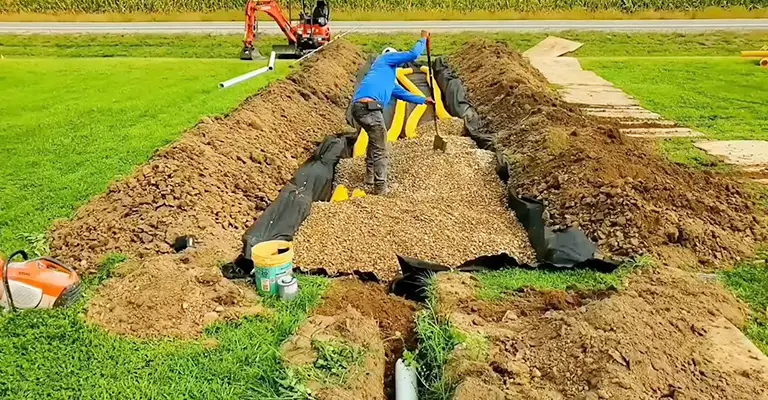Creating a leach field, also known as a drain field or septic drain field, is an essential component of a septic system.
This system efficiently disposes of wastewater and allows for the natural filtration of contaminants before the water reaches the groundwater table.
One critical element in constructing a functional leach field is properly utilizing gravel. If you plan to install a leach field, you may wonder how much gravel is required to ensure its optimal performance.
If the soil is coarse and sandy, at least 200 square feet of gravel will be needed for a typical two-bedroom home. On the other hand, you’ll also need at least 1,200 square feet for gravel installation in clay or loam soil.
Note that this depends on various factors, including the size of the leach field, soil composition, and local regulations.
How Much Gravel Can Go Over a Leach Field?
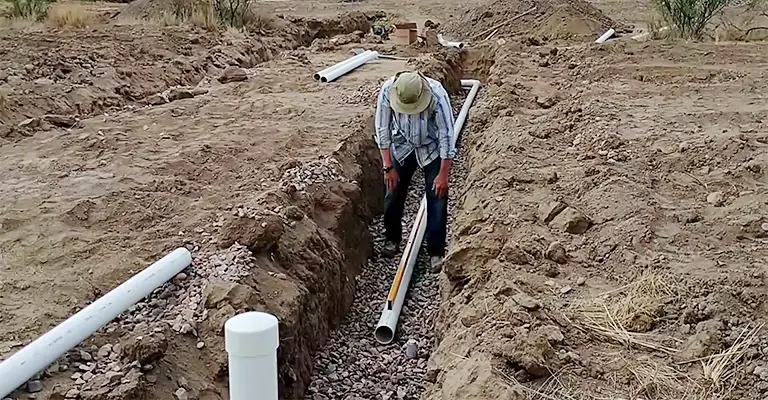
It depends on the size of your septic system, the soil’s composition, and how much gravel you can put over your leach fields. The soil in the typical two-bedroom house will require at least 200 square feet of gravel if it is coarse and sandy.
Nonetheless, if you’re installing gravel in clay or loam-based soil, you’ll need a bed of at least 1,200 square feet. It is required that all beds have a thickness of at least one foot. A bed’s surface area measures its size.
Putting too much gravel on your leach field is dangerous, as this can cause improper waste drainage and damage your septic system. Installing a new septic system will cost between $3,000 and $10,000.
The Type Of Gravel To Use For A Leach Field
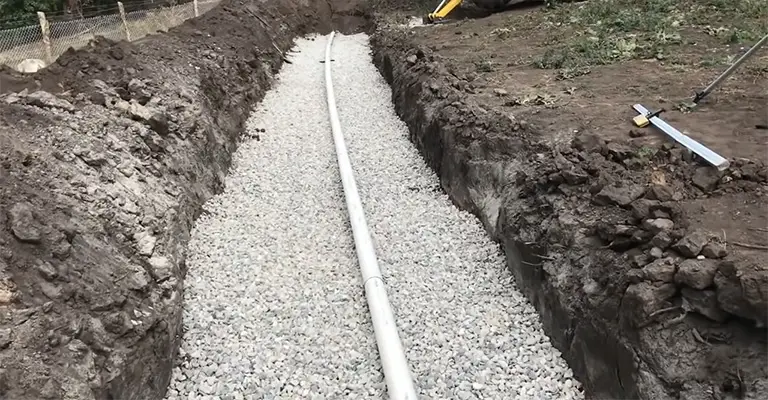
Like many stone types, gravel comes in various sizes and shapes, so knowing which to use is essential. Using smaller rocks causes your septic tank to overflow with water, leading to a backup in your house.
Size of Gravel
Using the right gravel size, water can flow out of a septic tank smoothly and quickly. When the gravel is too small, it can fill up the tank and cause a backup inside the house.
On the other hand, oversized gravel can flood the soil around the tank and flood your garden. On the Eco-Nomic website, pieces of clean, washed stone about one and a half inches in diameter work best.
Typically, gravel suppliers refer to drain rock as gravel. If you place larger pieces of gravel around your tank, they will cause water to flood the soil and enter your yard. Using rock one and a half inches in diameter will produce the best results.
Material
Choosing the right material is essential. There is a difference in crushed rock types, so some gravel types won’t work well in some projects. For example, shale is more suitable for decorative purposes than septic tank beds due to its softer nature.
A gravel bed that can carry its weight must support Septic systems full of waste. Unless we do, we know what happens. It would be best to choose granite gravel since it’s durable and wallet-friendly.
Amount
Septic tanks of different sizes require different quantities of gravel depending on their size and soil composition. Installing a two-bedroom septic tank in sandy soil with coarse particles requires at least 200 square feet of gravel bed.
However, it has to be installed on a bed of 1,200 square feet or more when the soil is clay or loam. Beds are measured by their surface area, and all beds use a uniform thickness of one foot.
How Deep Should a Leach Field Be?
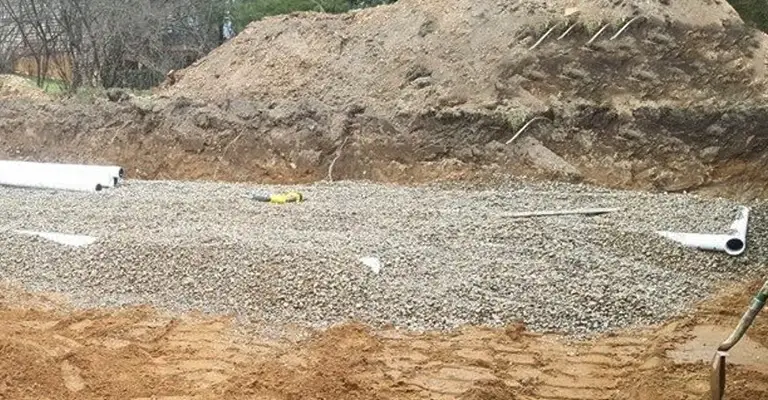
For most septic systems, you’ll need a leach field that’s three to four feet deep. As a result, the pipes are covered with gravel that measures 12 inches underneath and 2 inches above the surface.
You’ll then backfill the area with soil to achieve an even surface. However, they do not always need to be deep. There are leach fields that have drain pipes six inches below the surface.
The soil beneath the bedrock creates an impermeable layer, which makes septic systems more challenging to operate.
In this situation, you should keep the drain field at least 2 feet above the underground obstacle. Make the area broader and longer if you want to accomplish this.
Why Homeowners Use Gravel for Septic Systems and Leach Fields
Gravel is a favorite choice for septic systems and leach fields because it can hold heavy weight without crumbling. As a result, you’re able to support your septic system and provide your system with additional help during times of heavy flow.
Gravel also has a smooth finish, a pleasing aesthetic, and the ability to drain well. Water may accumulate in your yard if you don’t have adequate drainage-and it won’t be fun!
Understanding the Purpose of Gravel in a Leach Field
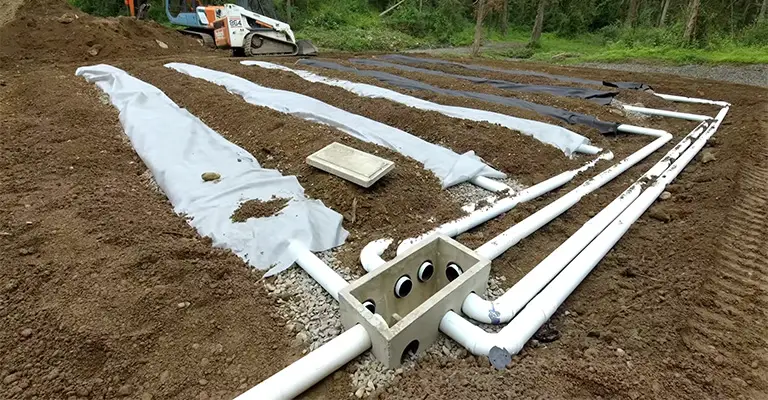
By creating a permeable environment, gravel facilitates the efficient movement of wastewater from septic tanks into the soil under the house.
Septic tank wastewater enters the leach field pipes, also called perforated pipes or distribution pipes, after leaving the tank.
A gravel bed is typically placed underneath these pipes to distribute effluent evenly throughout the field.
A gravel bed optimizes the leaching process by providing efficient drainage and preventing clogging, thus allowing waste water to percolate properly into the ground.
Alternatives
A septic tank bed can be built with different drainage materials than gravel. A variety of crushed materials, including recycling tires, concrete pieces of the correct size, and broken glass, may work in some situations, according to the National Environmental Service Center.
A tank can be supported by any material as long as it is resistant to degradation in water, allows for drainage and is not susceptible to breakdown in water.
The entire drainage process is handled by a prefabricated vault in some septic systems, which do not need a bed.
Conclusion
Creating a functional and efficient leach field is essential for properly operating a septic system. Leach fields need to be carefully measured and calculated in order to ensure a reliable, well-draining system.
A project can be designed to meet the requirements and provide effective wastewater treatment by considering factors such as the size of the leach field, the soil composition, and local regulations.

